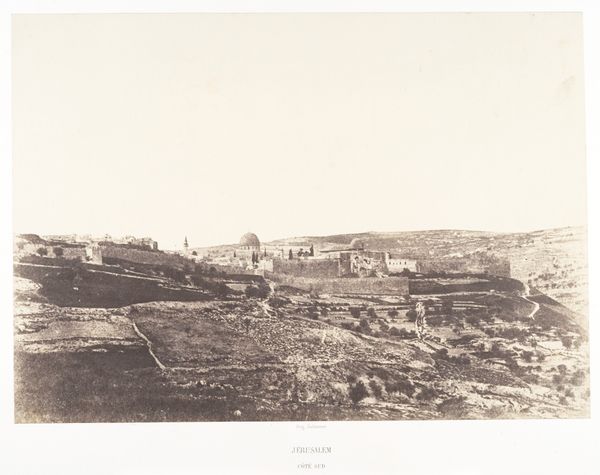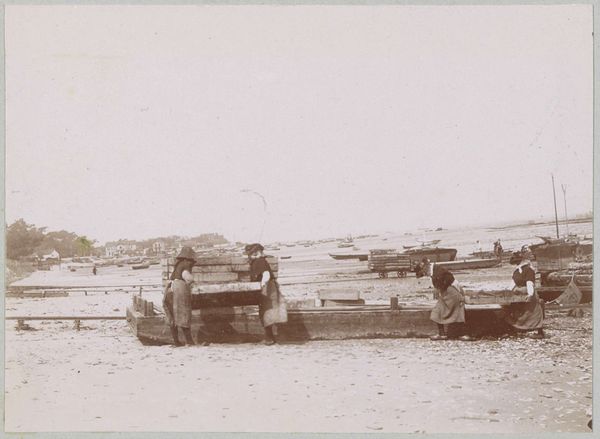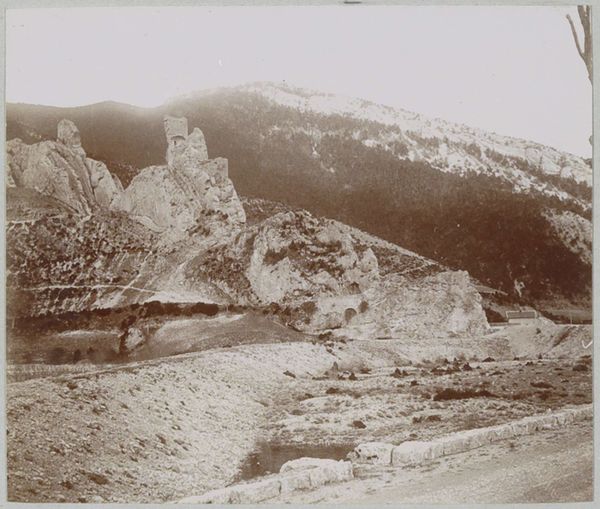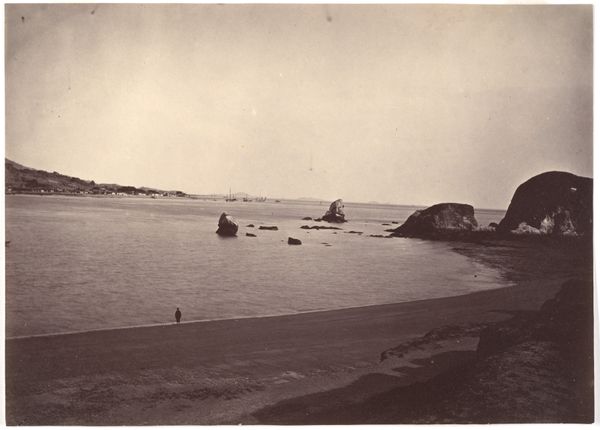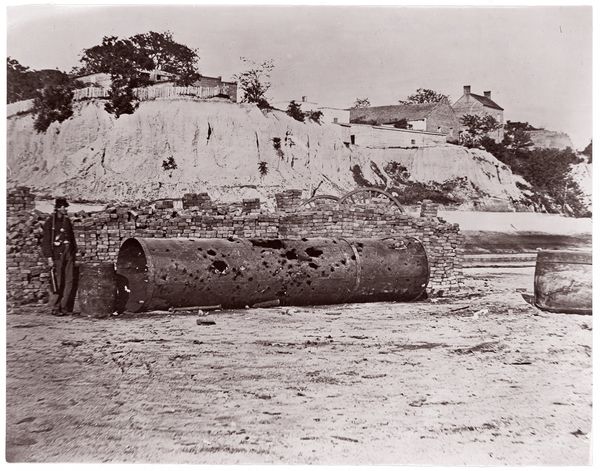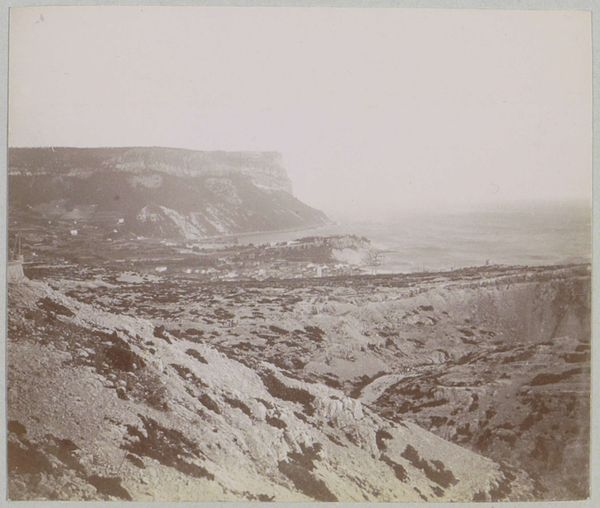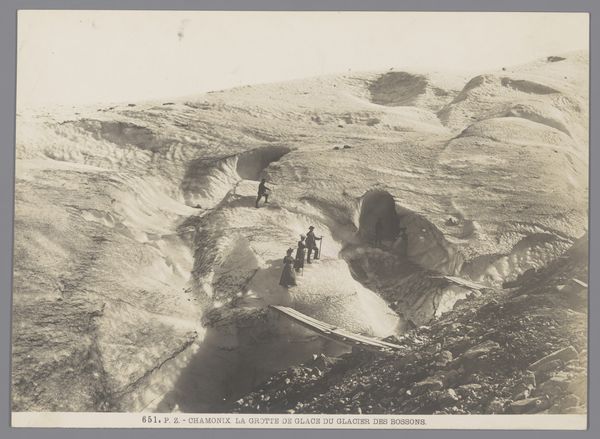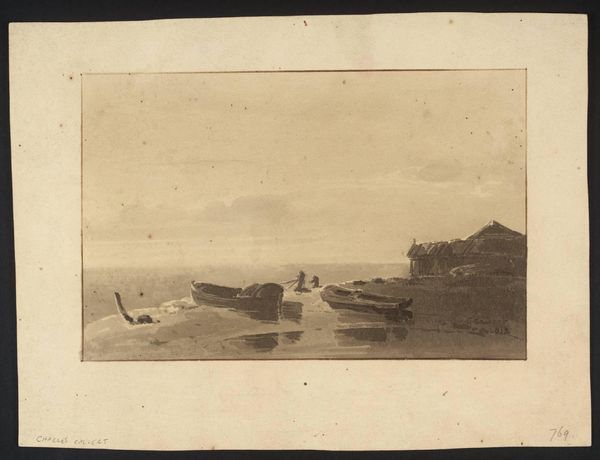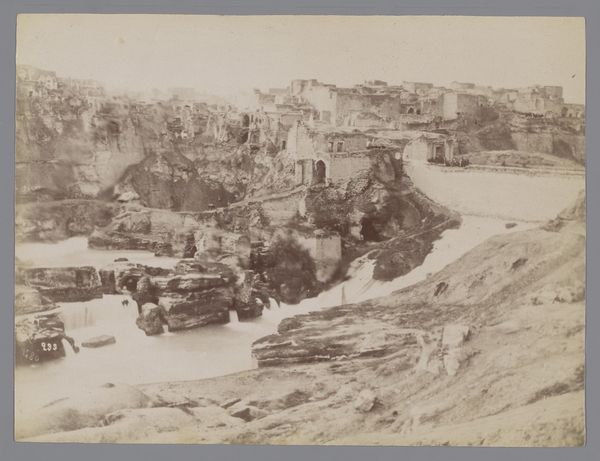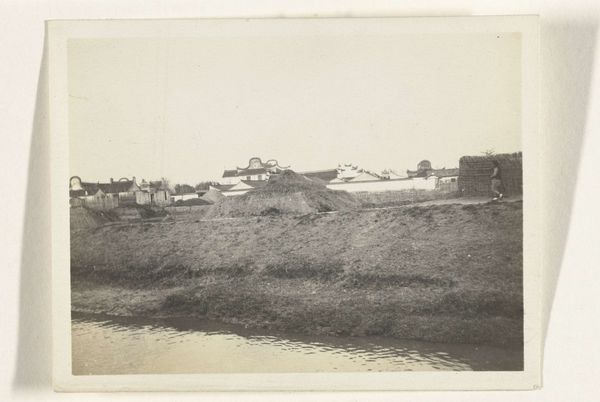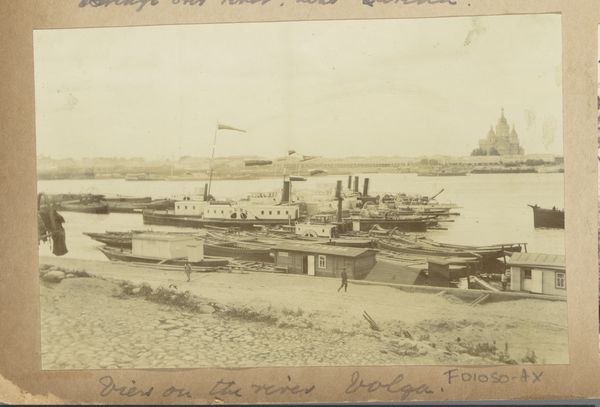
Dimensions: height 70 mm, width 82 mm
Copyright: Rijks Museum: Open Domain
Editor: Here we have "Gezelschap op het strand van Etretat", a gelatin silver print, possibly made between 1902 and 1914. There’s something very staged about the photograph that I find interesting, almost like a tableau vivant. What do you see in this piece? Curator: That feeling of being staged is very perceptive. What appears at first glance as a casual snapshot of beachgoers actually reveals a carefully constructed narrative about leisure and social performance in early 20th-century Europe. Consider the figures; their clothing marks them as bourgeois. How do their poses and separation within the composition speak to notions of class and gender? Editor: They're not interacting much with each other, or with the beach itself. It’s a very formal leisure. Curator: Precisely! It's about visibility and adhering to social codes. The beach was becoming a site of bourgeois leisure, but the rules of engagement were still being defined. Who was allowed to occupy this space, and how were they expected to behave? How does photography, as a relatively new medium, play a role in shaping and documenting these social rituals? Editor: I hadn’t thought about photography's role in all of that. So it’s more than just a record. Curator: Exactly! And thinking about it now, what’s included – the barrels, the boats, the figures looking out, but also what is excluded – think about race and the limited vision of who is even allowed into that space of leisure and luxury at that time. This photograph isn't simply capturing reality; it's participating in the construction of it. The people here seem to want to appear leisured, successful, cultured... even as that’s impossible for others at that time. Editor: I'm beginning to see the beach as almost like a theater, and these people are performers on it. Thanks, that was illuminating! Curator: Indeed. Analyzing photographs like these lets us see the complex social dynamics and power structures at play during that period. It certainly makes you think about representation and how images shape our understanding of the past and present.
Comments
No comments
Be the first to comment and join the conversation on the ultimate creative platform.
